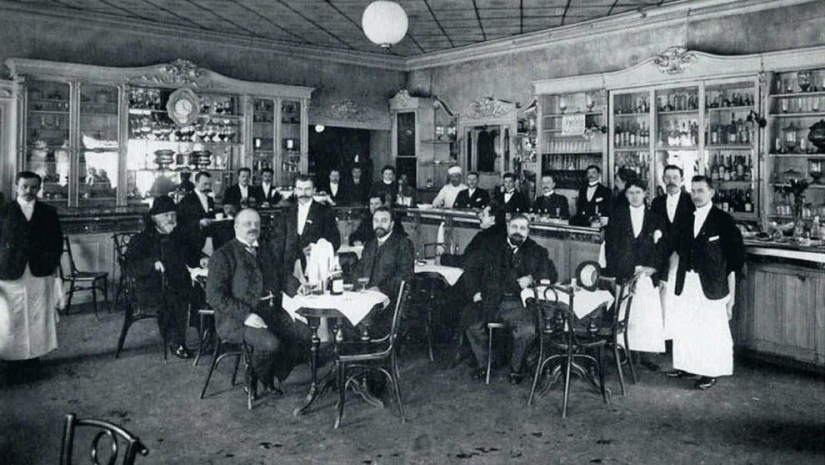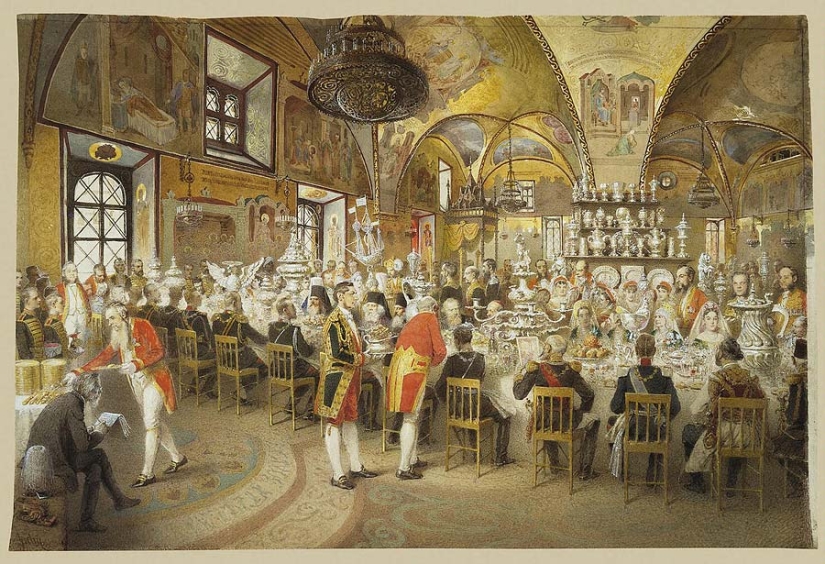The Secret of the Buffet, or Why Only Our People Know About This Format of Serving Food
Categories: Food and Drinks
By Pictolic https://pictolic.com/article/the-secret-of-the-buffet-or-why-only-our-people-know-about-this-format-of-serving-food.htmlThe buffet, as an integral part of the "all inclusive" tourist format, is probably familiar to everyone. Even those who have never vacationed in foreign hotels have heard about it. And our compatriots who have chosen the resorts of Turkey and Egypt know everything about it. It is surprising that the Swedes themselves, like other Scandinavians, have never heard of the buffet. Moreover, except for the Turks and Egyptians, only Russians and other residents know about this legendary meal. Why is this so?

To understand this issue, we need to take a closer look at the traditions of serving dishes in different countries. They began to form around the beginning of the 19th century. It was then that a certain order emerged and three main serving options emerged: British, French and Russian.

Each serving was based on the unique traditions of the peoples and the features of their national dishes. They had common features related to borrowings, but there were also very unique ones. What we now call a Swedish table appeared only in the second half of the 19th century, along with another method - the European one.
The British method involves placing the dishes on a movable table and covering them with cloche caps. The table is rolled along the row of guests sitting at the table and the waiter places the food on plates. The process is controlled by the diner himself, who asks to stop, add more or refuses the dish altogether. This is the pompous way food is still served in expensive British hotels and aristocratic estates.

The French way of serving required a certain amount of dexterity from waiters. It was customary to serve guests holding a dish in the left hand. A person seated had to be approached from the left, and dishes were served with only the right hand. When serving soups and sauces, one had to act especially virtuoso.
Everyone is probably familiar with the Russian way of serving food. It is perfectly shown in the Soviet comedy "Ivan Vasilyevich Changes Profession". A line of servants with trays entered the dining room. Food was placed on wide tables and everyone cut off as much as they thought necessary. This is approximately how holiday tables are still set in Russia, Ukraine and Belarus.

The European version of serving is a mixture of British and French, but simplified. Waiters bring plates covered with cloches and place them in front of each guest. Under the cloche, everything is ready for the meal - there is a hot dish, a side dish and even a salad. Such dinners can often be seen in films, which show expensive hotels and official receptions.
In the north of Europe, in Scandinavia, a unique way of serving appeared. It is directly related to the specifics of the harsh region, where pickles, marinades, dried and dried fish and meat have always been held in high esteem. The Swedes set a table for guests, which they called simply "smorgosburdet". Translated from Swedish, this means "sandwich".

The guests themselves took bread from the trays and put any snacks they liked on it. But this was only preparation for the main meal. While the guests were snacking and chatting, the hosts set the main table, to which everyone was then invited. The Scandinavian method became popular at the end of the 19th century at railway stations and in hotels. Europeans quickly understood all the advantages of this type of serving.
In Russia, the Scandinavian method was well known. In many restaurants, while the main table was being served, guests were offered a snack table. Despite this, the "Swedish" version differed from ours in its scope - the tables with snacks were bursting with variety and quantity, and no one was watching who took how much. And all this for a fixed, sometimes very modest price! The owner will not be at a loss, since this method guarantees him crowds of visitors.

Russian publicist Sergei Pavlovich Mech wrote the following about this feature of the Swedish table:
An ideal option for a Russian who loves to eat and is not prone to wastefulness. This is how many writers and travelers tell about their acquaintance with Swedish tables. Interestingly, there was a humorous version of the origin of such serving among the people.

Once during the Northern War, Russian soldiers attacked the Swedes so quickly that they abandoned the table set for dinner and fled. Of course, the hungry Russians after the attack did not refuse the free treat, and so the expression "Swedish table" appeared. What is meant is that from such a table anyone who happened to be nearby can take whatever they want. Of course, this is just a joke.
In Scandinavia and the rest of Europe, of course, there is a Swedish table. It is just called differently - "buffet". For our people, a buffet is old kitchen furniture, as well as a small cafe at the train station or in the theater. Therefore, there may be confusion with definitions. But the word "table" is clearly understood by a Russian person.

Before the revolution, Swedish tables were known to everyone in Russia. But after the Bolsheviks came to power, there was no time for tables with snacks and this phenomenon simply ceased to exist. Our fellow countrymen rediscovered it. When, after the fall of the "iron curtain", citizens of the former Soviet Union began to go on holiday to Egypt and Turkey, they learned about the ingenious "all inclusive" system.
"All inclusive" appeared in the mid-20th century in hotels owned by Belgian businessman Gerard Blitz. It was he who introduced a fixed fee for accommodation, food and entertainment in hotels on the island of Mallorca. Blitz's invention turned out to be so successful that holidaymakers literally began to besiege his hotels. The experience was immediately adopted by other hoteliers and "all inclusive" began to march across the planet.

When the Egyptian Red Sea resorts began to actively develop in the 80s of the last century, the "all inclusive" system and grandiose snack tables immediately appeared there. Unlike the traditional Scandinavian "buffet", the "buffet" method of serving food aimed at Russian guests included not only cold appetizers. Now it includes soups, hot dishes, and even desserts.
By the way, in different countries “all inclusive” can mean different things. So find out what exactly is meant.
Recent articles

Read and find out that there is something else to do in the army besides peeling potatoes. Making a bridge at gunpoint. Breaking ...

Now, with just one small device, we can exchange instant messages, buy books or music, get any necessary information and much more. ...

Although today it is customary to scold sugar harshly, people have not yet learned to do without it. The history of mankind is ...